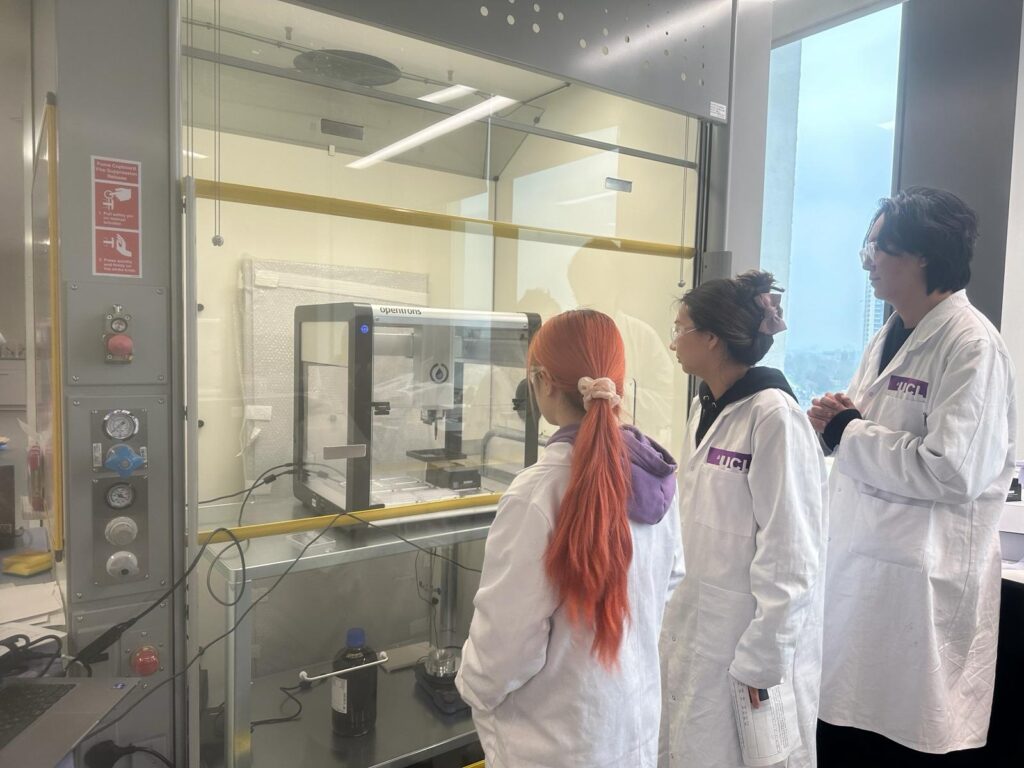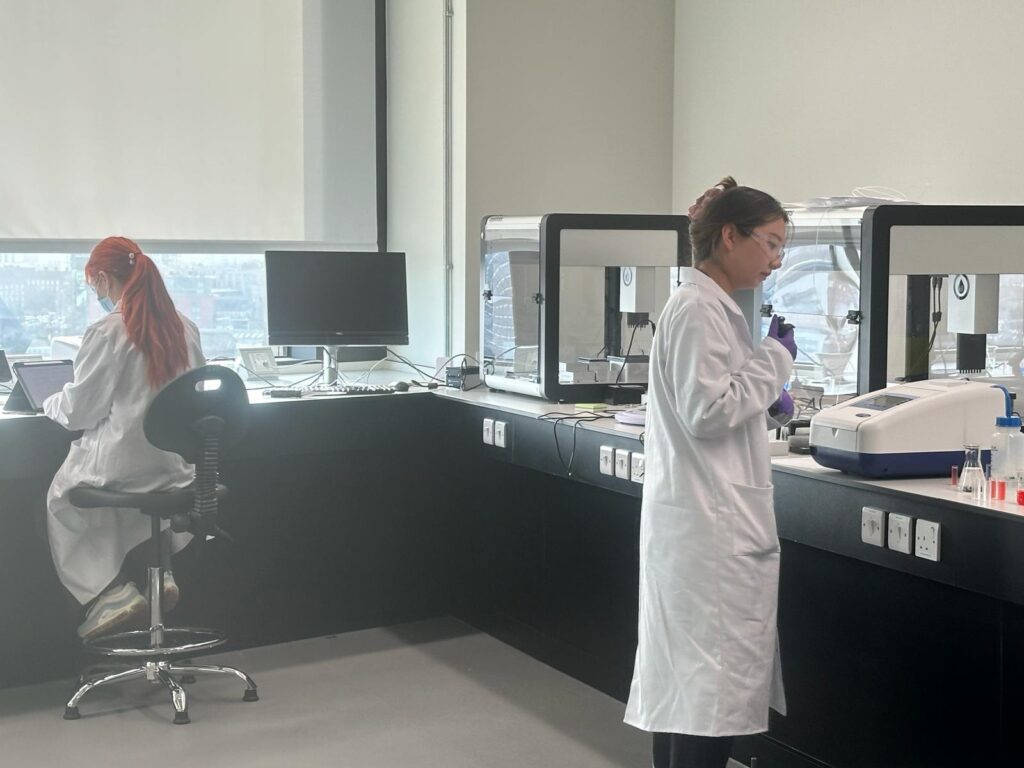
“Students were amazed to see the liquid handling robot” Solomon Bawa, says, recalling the awe of his students when they were first introduced to robotic systems. Taking students of which some have never used Python, teaching them to write code, and then letting them control the Opentrons OT-2 significantly boosts engagement and confidence in the classroom. Solomon repeatedly hears from some students who say, “this is one of the most exciting lab exercises we have done.”
Solomon is one of a small group of educators at the forefront of lab automation in teaching spaces as part of our Opentrons for Education initiative. Here are our takeaways from our discussion of his Data-Driven Materials Manufacturing course, where he’s introducing master’s students to the OT-2 for liquid handling automation within the context of materials manufacturing.

Educator Profile
Solomon Bawa is a Lecturer (Teaching) in Digital Manufacturing of Advanced Materials (DMAM), Department of Chemical Engineering at University College London (UCL)–a globally-diverse, multidisciplinary university ranked #8 in the World University Rankings 2023, and known for its progressive approach to research and research-based teaching.
Prior to joining the UCL faculty, Solomon obtained his Bachelor of Engineering and Master of Science in Chemical Engineering at Ahmadu Bello University, in Zaria, Nigeria, where he was a recipient of the Overseas Postgraduate Scholarship from the Petroleum Technology Development Fund (PTDF), Nigeria.
Solomon has been one of the driving forces in developing a new interdisciplinary master’s programme called Digital Manufacturing of Advanced Materials (DMAM), launched in 2023, which sits within the recently opened Manufacturing Futures Lab (MFL), the largest academic entity at UCL’s new campus in the East of London (UCL East). The MFL aims to become a global leader in fundamental manufacturing research by taking a distinctive multidisciplinary approach. Within the programme, Solomon leads courses in Data-Driven Materials Manufacturing and Chemical Engineering Research Methods, and he coordinates mandatory research projects in digital materials manufacturing and nature-inspired solutions.
Educational Objectives
The Data-Driven Materials Manufacturing course aims to develop relevant industry skills amongst graduates, increasing hireability across diverse industries and academia. Through practical hands-on experience programming a liquid automated handler robot (OT-2), students access experiences that are typically unavailable to students, providing a significant benefit to career prospects.
Upon completion of the course, students gain confidence and problem-solving experience with automated liquid handling robots, and exposure to tech they will encounter throughout their careers.
Context and Implementation
DMAM is a new 12-month master’s programme–one of six taught within the MFL. DMAM equips students with interdisciplinary skills highly sought after by industry and academia. Students also gain the abilities needed to develop and produce advanced materials such as new drug molecules and pharmaceuticals, materials for energy generation and storage, catalysts facilitating sustainable processes, functional nanomaterials for precious metal recovery or biomedical applications, and more.
DMAM takes a holistic approach, including hands-on experience in dedicated teaching labs for material synthesis, characterization, robotics, automation, and the fundamentals of data science.
The programme balances computational and experiential learning, utilizing an industrial advisory board to ensure students are developing relevant career skills. Future graduates are optimally prepared for careers in manufacturing, healthcare and diagnostics, pharmaceutics, policy, data science, automation, and academia.
Solomon is the lead for the compulsory course, Data-Driven Materials Manufacturing, which is a 100% lab-based integrated module. Students’ technical backgrounds vary widely, some with highly-computational and others with experimental backgrounds.
Before introducing the OT-2, Solomon guides students through basic lab exercises, ensuring they understand manual processes prior to learning automation. Students then work independently to calibrate the OT-2 deck and carry out serial dilutions using their Python code in the Jupyter notebook.
From there, students work to determine the solubility of chemicals in different solvents, which is quite relevant for students pursuing careers in the pharmaceutical industry.
At the time of our interview, Solomon noted that his students were working on the manual operation of synthesizing gold nanoparticles, “To generate 16 samples, it took us almost 5 hours. So next lab session we’re going to use the OT-2 to do the same process but in an automated mode. They’ll see how we could save time, have more samples and then we generate a data-driven model which often requires a lot of data.”
The course is naturally interdisciplinary, demonstrating to students through experience that increasing data points requires building a data-driven model if they want to do so efficiently.

Results and impact
Using the OT-2 can be an energizing and confidence-boosting experience, as Solomon recalls:
“The day before our meeting, one of my students used their coding skills to instruct the OT-2 robot to write ‘UCL’ on a 96-well plate. They were so excited to take a picture and share their accomplishments with family members. Moments like these demonstrate the engagement, enthusiasm, and pride of students who are given the opportunity to operate robotics in the lab.”
Solomon explains that gaining confidence using the OT-2 for liquid handling automation and analyzing products within a robotics system is beneficial for students–and attractive to hiring teams–in the energy sector, materials manufacturing and pharmaceuticals industries, as well as academic fields such as data science or automation.
Future Plans
Initially, Solomon experienced challenges securing the funding to invest in robotics for educational purposes, but quickly the use of the OT-2 robot in education has become a major draw for students.
As the benefits of using the OT-2 have begun to materialize in the educational space, Solomon has been approached by other academics to collaborate on the design of further interdisciplinary exercises.
Further, he and his team have also ordered the Opentrons Flex, which offers an individual deck with independent slots.
Conclusion
Using the OT-2 in Data-Driven Materials Manufacturing has helped students develop career-relevant programming and problem-solving skills, while boosting confidence and enthusiasm in wet lab automation procedures.
When he started the course, Solomon was expecting that students would struggle with using the OT-2 for liquid handler automation for weeks. But, he was surprised to see that after an hour and a half’s introduction, students were already confident and capable.